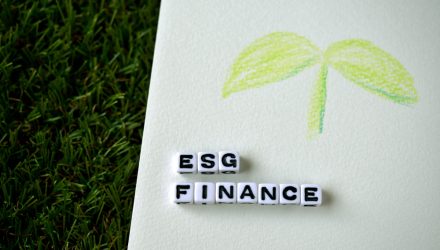Environmental, social and governance (ESG) ETFs, including the FlexShares STOXX US ESG Impact Index Fund (CBOE: ESG) and its global counterpart, the FlexShares STOXX Global ESG Impact Index Fund (CBOE: ESGG), are often viewed as destinations for younger investors, but the reality is, ESG investing has broader appeal across demographics.
Data confirm that investors poured into ESG ETFs in the first quarter and not all of those flows are attributable to young investors.
“Investors are reimagining the future state of investing in the aftermath of the pandemic, and record flows into environmental, social, and governance (ESG) ETFs undoubtedly reflect that mindset,” according to S&P Dow Jones Indices. “Assets in ESG ETFs and ETPs listed globally increased by 4.93% at the end of February 2020, to a new record of USD 67.99 billion.”
That coupled with investors’ growing disdain for traditional energy could spur the creation of more ESG funds because high-level investors are demanding access to more sustainable products.
ESG Ebullience
Research indicates older investors are embracing products such as ESG and ESGG.
“For years, ESG adoption has focused on millennials and their influence on sustainable investing,” notes S&P Dow Jones. “What has been consistently ignored, however, is that investors from all generations want to learn more about ESG investing and how best to put their values into action. Surprisingly to some, this includes the baby boomer generation.”
ESGG is based on the STOXX Global ESG Impact Index, which screens companies scoring better with respect to a select set of ESG key performance indicators (KPIs), with the bottom 50% of such companies based on their ESG KPI scores excluded from the Index, as are companies that do not adhere to the UN Global Compact principles, are involved in controversial weapons or are coal miners.
When covering ESG investments, the environmental aspect includes attributes like climate change, natural resources, pollution, waste management, and other environmental opportunities. The social aspect incorporates human capital, product liability, stakeholder opposition, and other social opportunities. Lastly, the governance aspect covers things like corporate governance and corporate behavior.
“It is increasingly evident that all generations wish to educate themselves on how to make ESG investment decisions and how to best align their investment objectives with their values,” notes S&P Dow Jones. “However, an additional objective shared by baby boomers, Gen Xers, and millennials alike is that aligning investments with their values not come at the cost of investment performance.”
For more on multi-asset strategies, please visit our Multi-Asset Channel.
The opinions and forecasts expressed herein are solely those of Tom Lydon, and may not actually come to pass. Information on this site should not be used or construed as an offer to sell, a solicitation of an offer to buy, or a recommendation for any product.

